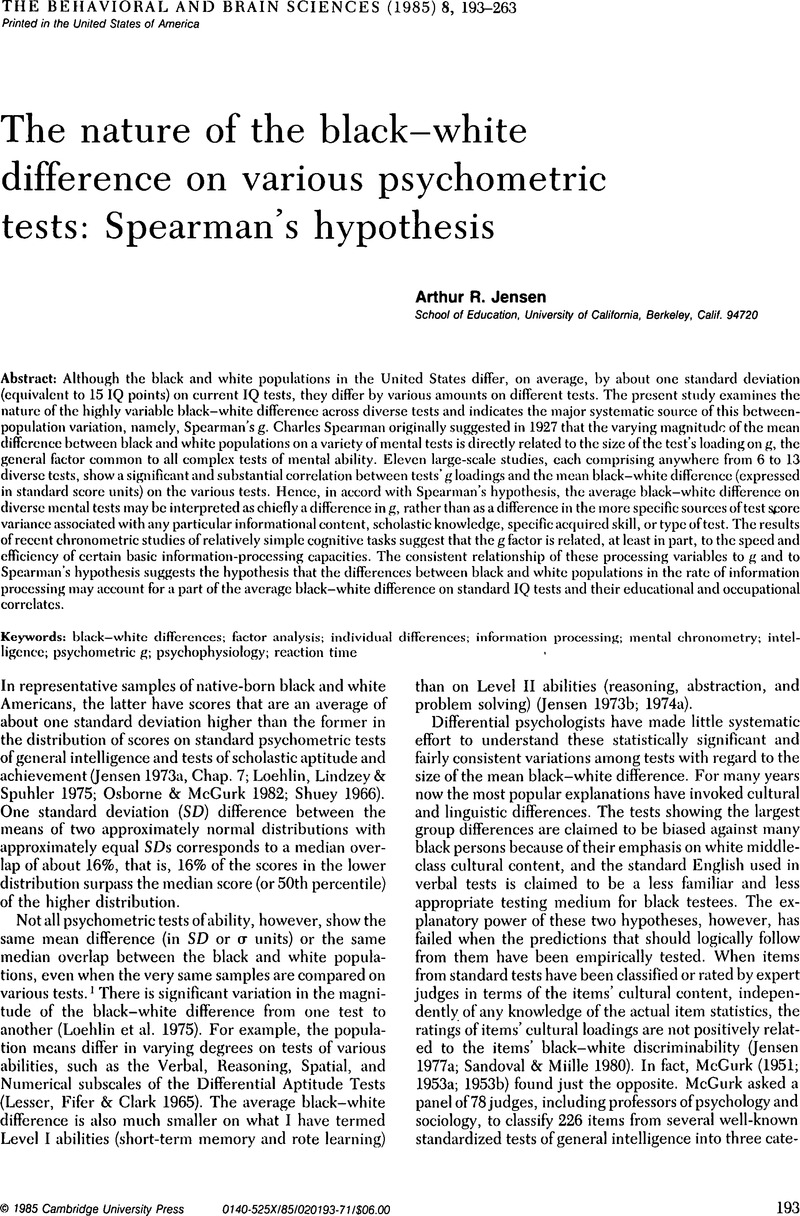Crossref Citations
This article has been cited by the following publications. This list is generated based on data provided by Crossref.
Brody, Nathan
1987.
Jensen, Gottfredson, and the black–white difference in intelligence test scores.
Behavioral and Brain Sciences,
Vol. 10,
Issue. 3,
p.
507.
Shockley, William
1987.
Jensen's data on Spearman's hypothesis: No artifact.
Behavioral and Brain Sciences,
Vol. 10,
Issue. 3,
p.
512.
Jensen, Arthur R.
1987.
Further evidence for Spearman's hypothesis concerning black–white differences on psychometric tests.
Behavioral and Brain Sciences,
Vol. 10,
Issue. 3,
p.
512.
Corballis, Michael C.
1987.
Factoring intelligence: A longitudinal approach.
Behavioral and Brain Sciences,
Vol. 10,
Issue. 3,
p.
508.
Gottfredson, Linda S.
1987.
The practical significance of black–white differences in intelligence.
Behavioral and Brain Sciences,
Vol. 10,
Issue. 3,
p.
510.
Thorndike, Robert L.
1994.
g.
Intelligence,
Vol. 19,
Issue. 2,
p.
145.
Schonemann, Peter H.
2005.
Encyclopedia of Social Measurement.
p.
193.



